Your BMI
As it has important implications related to breast cancer, including your risk of treatment related side-effects and surgical complications, and also your risk of recurrence, it is important that you are aware of your body weight category. Almost two thirds (63%) of Australians are now overweight or obese (36% overweight but not obese, and 28% obese).1 There has been a progressive “normalisation” of obesity, to the extent that many overweight and obese people are unaware that they are overweight or obese, and public health initiatives to tackle obesity are potentially hampered by this lack of recognition of weight status. A British study of weight perception found self-identification of obesity to be low, with the proportion of obese adult women selecting the term ‘obese’ to describe their body size declining from a 13% in 2007 to an even lower level (11%) in 2012.2 A 2016 University of Sydney research similarly revealed that more than one in four (26.8%) overweight or obese Australians don’t realise they’re overweight or obese.3
World Health Organisation (WHO) Weight Category Classification according to BMI
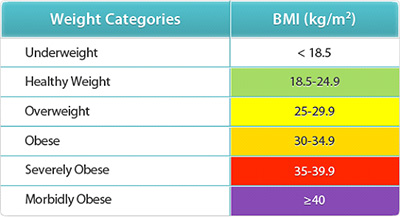
It is the duty of care of health professionals to inform and educate patients about risk factors, particularly if they are modifiable, and the diagnosis of a serious illness can serve as an opportunity to critically reassess your lifestyle and implement some positive changes, and we are here to help you in this process.
An “ideal weight” is where a person is at their healthiest in terms of what they weigh. There are a variety of different ways to calculate ideal weight ranges and obesity but the most widely-used methods are Body Mass Index (BMI) and Waist Circumference , and the Australian National Health and Medical Research Council clinical practice guidelines for management of overweight and obesity, lists BMI and waist circumference as the routine measures for identifying overweight and obesity.
BMI
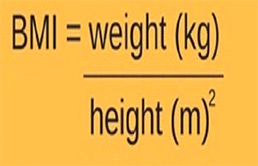
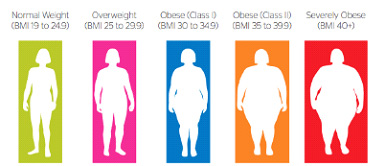
BMI is the international World Health Organisation (WHO) standard for classifying weight. BMI is defined as a person’s weight in kilograms divided by the square of his height in meters (kg/m2).4 BMI is the ratio of a person’s weight and height, and is a simple index of weight-for-height that is commonly used to classify overweight and obesity in adults.
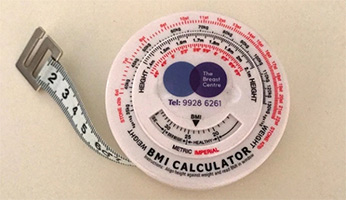
A healthy BMI is between 18.5 and 24.9. When a person is overweight or obese, it means that they have too much body fat in relation to lean body tissue, such as muscle. Overweight is defined by the WHO as a BMI of 25 or higher, and obesity is defined as a BMI of 30 or higher. These WHO BMI thresholds reflect the increasing risk of excess weight as BMI increases above the optimal healthy range. Obesity is split into three classes, according to severity, with more severe obesity associated with a higher risk of comorbidities.
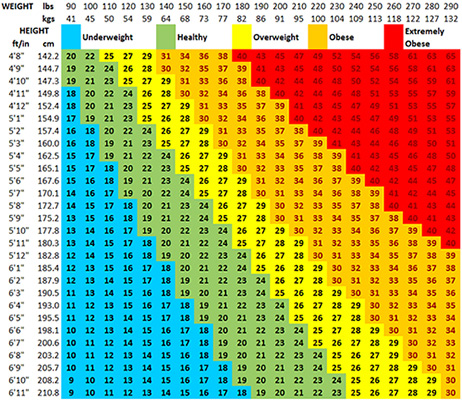
Examples of World Health Organization Obesity Classifications (Reproduced from Plastic and Reconstructive Surgery, Garvey et al, 2012)
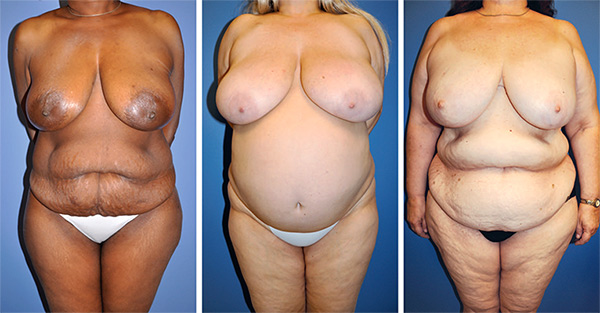
Above Left -Class I obesity (BMI 30.0 to 34.9); Centre -Class II obesity (BMI 35.0 to 39.9); Right – Class III obesity (BMI>40)
BMI provides the most useful population-level measure of overweight and obesity as it is the same for both sexes, and for all ages of adults, however, it should be considered an approximate guide because it may not correspond to the same degree of fatness in different individuals. It is important to remember that BMI may not be an applicable measure for those under 18, pregnant women and athletic people with higher than normal levels of lean body tissue/muscle.
Waist Circumference

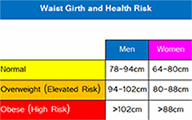

If your waist measures 80cm or more for a woman, and particularly if it is over 88cm, you are potentially harbouring a dangerous amount of abdominal fat. Subcutaneous fat that lurks beneath the skin as “love handles” or padding on the thighs, buttocks or upper arms may be cosmetically challenging, but it is otherwise harmless. However, the deeper belly fat — the visceral fat that accumulates around abdominal organs — is metabolically active and has been strongly linked to a host of serious disease risks, including cancer. To measure your waist circumference, all you need is a measuring tape. Place it on the top of your hip bone, bringing it around your body and level with your belly button.
- Australian Obesity Prevention Consensus, (2017), Tipping the Scales: Australian Obesity Prevention Consensus, Accessed at: www.opc.org.au/downloads/tipping-the-scales/tipping-the-scales.pdf
- Do weight perceptions among obese adults in Great Britain match clinical definitions? Analysis of cross-sectional surveys from 2007 and 2012. Johnson et al. BMJ, 2014. www.bmjopen.bmj.com/content/bmjopen/4/11/e005561.full.pdf
- Assessing patients’ and GPs’ ability to recognise overweight and obesity. C Wong. Australian and New Zealand Journal of Public Health. 2016. Accessed at: www.onlinelibrary.wiley.com/doi/epdf/10.1111/1753-6405.12536 .
- BMI-Where do you fit? Australia’s health 2018. Australian Institute of Health and Welfare (AIHW).www.aihw.gov.au/reports/australias-health/australias-health-2018/contents/bmi-where-do-you-fit
For further information on the relationship between body weight and breast cancer see:
You will need the Adobe Reader to view and print these documents.
![]()











